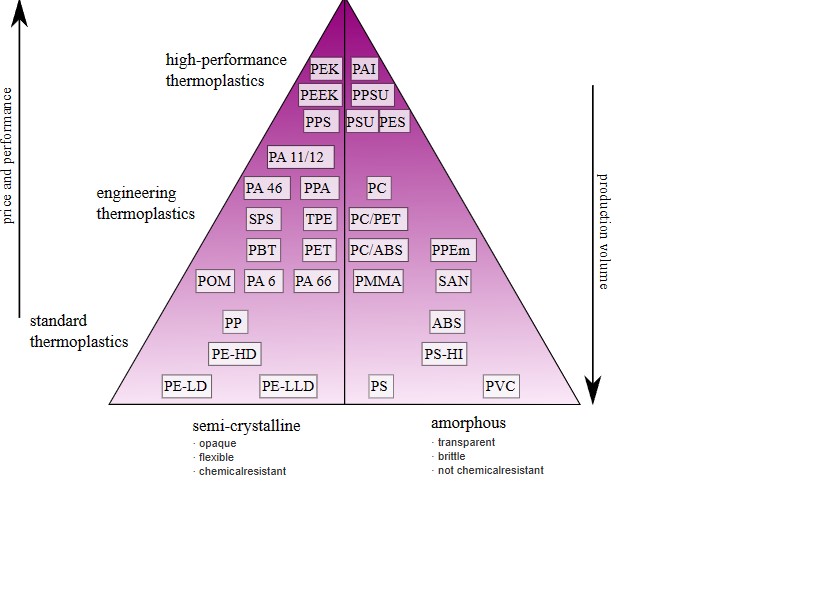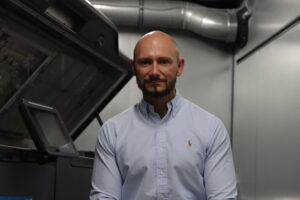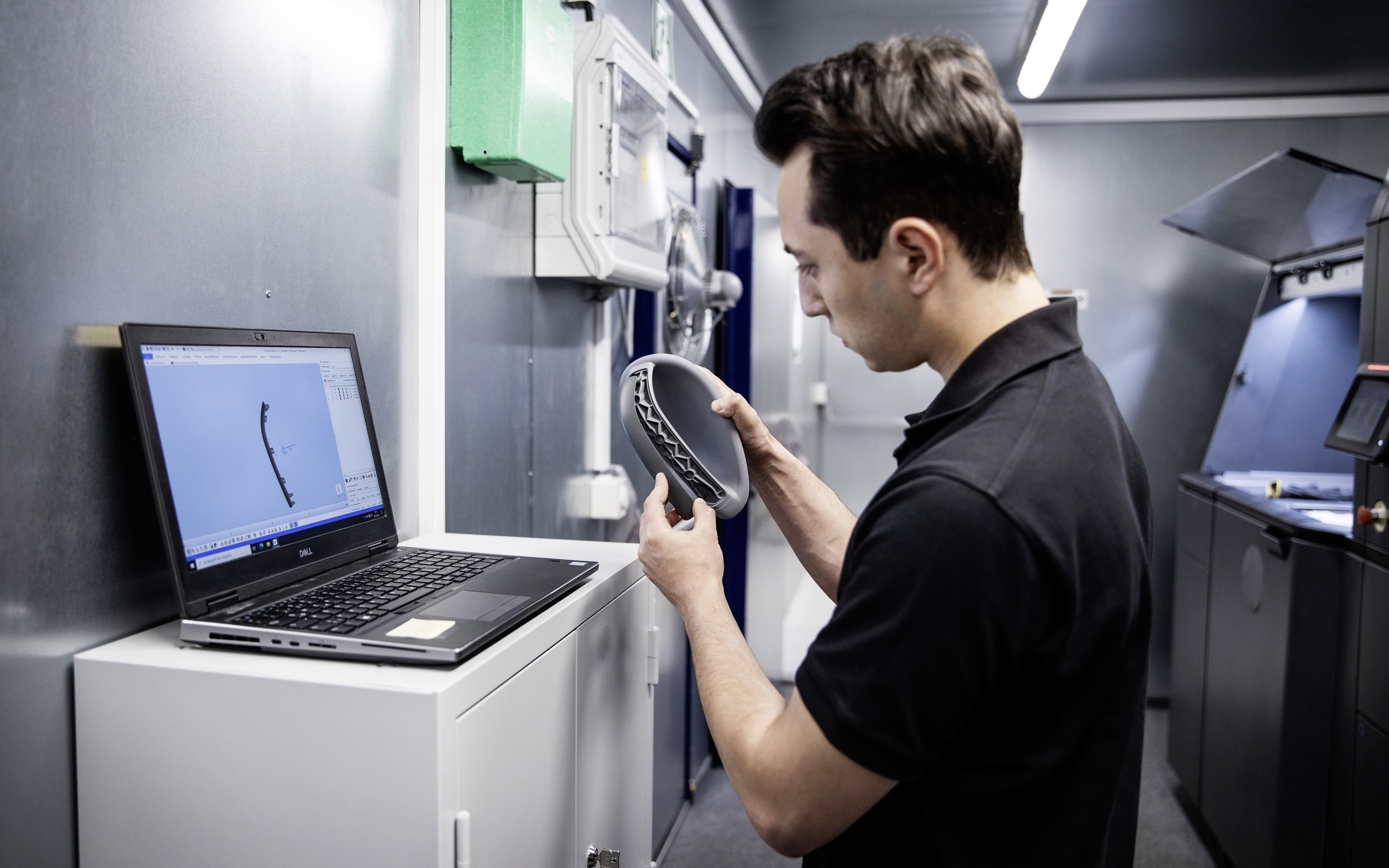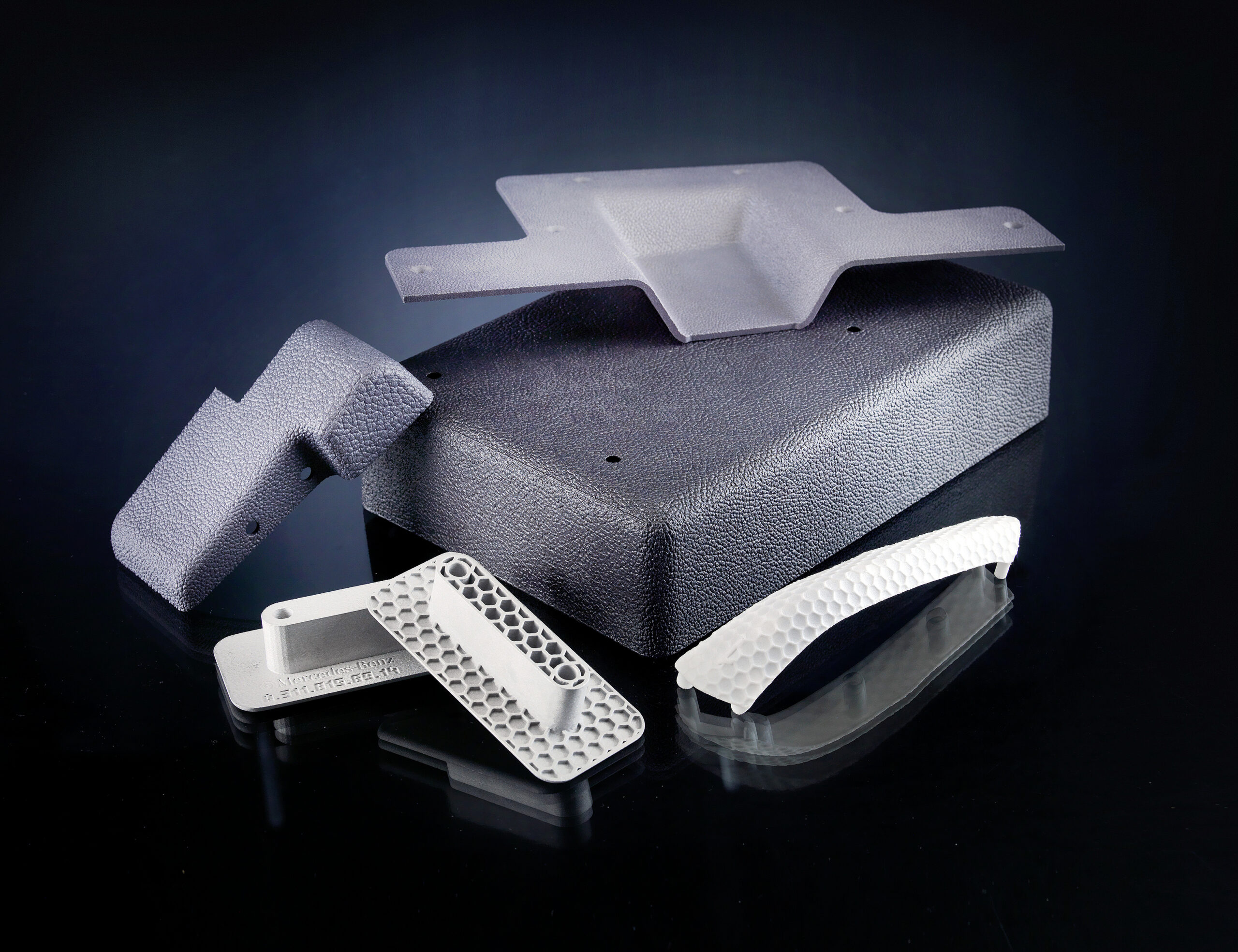In an industry where the growth of AM is often highlighted through a strong focus on metals, it should be noted that polymers remain the widely used material group, all applications combined. Industries such as aerospace, automotive, and biomedical are exploring applications of high-temperature polymer parts with AM, but a gap still has to be filled for them to achieve series production.
Let’s be clear: plenty of examples have already demonstrated that high-performance polymers processed via AM, have enabled the fabrication of tooling or end-use applications. The fact is, for those materials to be considered as a replacement of metals, for them to deliver high-value parts in low-quantity production runs, there are a number of requirements they should meet.
This article ambitions to outline the challenges manufacturers still have to address when adopting high-performance polymers in series production, and the ones these materials can already solve at the manufacturing level.
While various contributions have been considered, Sylvia Monsheimer, Head of Industrial 3D Printing & New 3D Technologies at Evonik, has been invited to share key insights alongside Ralf Anderhofstadt, Head of Center of Competence Additive Manufacturing, Printing Shop & Media at Daimler Trucks & Buses.
Evonik Industries AG is a stock-listed German specialty chemicals company, that develops and commercializes one of the most comprehensive portfolios of material solutions in the AM industry under the brand INFINAM®. As far as materials are concerned, the company’s high-quality polyamide 12 powders are acknowledged for their multi-purpose applications in the AM industry. The company’s experience in developing polymer-based 3D printing materials will enable us to put ourselves in the shoes of a material producer and to understand the complexity of high-performance polymers.
Daimler Trucks & Buses, on the other hand, will bring their expertise as an AM user. For many people, this company is just the largest commercial vehicle manufacturer, with over 40 production sites around the globe and more than 100,000 people at more than 40 locations across the world. In the 3D printing field, the automotive maker benefits from over 25 years of experience in 3D printing prototype construction. With 50,000 3D printable bus spare parts available today, the company mostly used AM in the after-sales division, to react fast and flexibly to urgent customer requirements, for example when customers order rarely required parts or have special requests.
Anderhofstadt told us they currently work with numerous partners and service providers, which is why they test all known production processes in AM and test them for series suitability. At the moment, their focus is on SLS, MJF and, of course, FDM, depending on the application.
Understanding the concept of “high-performance” polymers
If you’re new to this world, please note that the term “polymers” is often used interchangeably with “plastics”. However, we will mainly use the word “polymers” in this article.
Technically speaking, high-performance polymers (HPPs) are a group of materials that can retain their desirable mechanical, thermal, and chemical properties when subjected to harsh environments such as high temperature, high pressure, and corrosive chemicals.
While the term “high-performance” is now naturally used in the scientific and industry jargon, the truth is, it is not a scientific term per se. Nevertheless, it helps define a specific category that is at the head of a pyramid highlighting polymers’ performance. High-performance polymers are located at the top of the polymer pyramid and are directly followed by engineering polymers and commodity/standard polymers.

The last time we checked, high-performance polymers constituted about 700,000 tonnes or only 0.2% of all man-made polymers. They are typically much more difficult to manufacture. Since they are based on more complex monomers, they turn out to be quite expensive. That being said, the more complex or difficult the polymer material is to produce, the more performant the resultant polymer is.
Generally speaking, polymers provide a lot more of advantages than metals: they are more resistant to chemicals, they do not require (a lot of) post-treatment finishing efforts, they are lighter than typical metals, or they are naturally radar absorbent as well as thermally and electrically insulating. It’s fascinating how some of these properties are also sought out in HPPs developed for AM.

“A significant advantage lies in the high-temperature resistance, which is why this is also very interesting for the automotive sector. This is of course underlined by the properties such as high tensile strength and high chemical resistance. As a result, high-performance polymers are increasingly becoming an interesting alternative to metals, Daimler’s expert points out.
Surprisingly, the properties that make high-performance polymers helpful are often the ones that make them difficult or impossible to produce using common AM machines without high heat processes.
“If we’re talking about series production – parts that are produced for an end-use application – we will meet the following challenges then: We do not only have to replace the step of building a part but also adjustments of production process steps before and after building a part have to be considered and proven. In other words, we have to work on the integration into process chain which mainly is application driven. And turnkey solutions as a whole are not available. However, this point always is underestimated”, Monsheimer states from the outset.
Anderhofstadt agrees with her as he emphasizes the need for technical and qualitative release processes: “for series parts, it is of course essential to achieve 100% of the properties of the part in the overall context in order to achieve the quality standards. This is also the basis for reproducibility, which is absolutely necessary for series production.”
Added to that the “costs consideration”, and you make the conversation encompass the entire manufacturing chain:
“Another challenge for sure are costs of the overall 3D printing solution. The competition with injection molding is unbeatable for a large number of simple parts. Additive Manufacturing technologies in general offer advantages if freedom of design can be used or assemblies made in one part can be done. In doing so, [it is necessary to redesign the part(s) with AM in mind]. Eventually, special materials for special applications are still missing. Here we step in by continuously extending our product portfolio of application-driven 3D printing materials”, Evonik’s representative adds.
So, what challenges are we talking about?
 “Challenges” is a big word that is regularly used in every topic related to AM. In this specific case, I would like to think of them as limitations that lead to new opportunities for AM users.
“Challenges” is a big word that is regularly used in every topic related to AM. In this specific case, I would like to think of them as limitations that lead to new opportunities for AM users.
The first thing we will keep from Monsheimer’s latest comment is the limited number of high-performance polymers. Interestingly, the process is not as simple as creating forms of traditional polymers used in injection molding for AM.
The problem of “delamination” at the manufacturing level. According to machine manufacturer Orion, parts that are specifically made from PEEK, often suffer from this issue. This means that the fused layers that build the final shape are not properly welded together. These faulty PEEK parts behave more like a stack of loosely connected slices than as a continuous whole. These uneven mechanical properties are referred to as “anisotropic properties” and are a common problem in printed parts from many manufacturers. They have been able to explore a new solution to this problem when they were working on the AM of CubeSats, those miniature, lightweight satellites used for space research, earth observation, or telecommunications. The team used their Thermal Radiation Heating system. Developed in-house at Orion, it fuses the layers together while heating the entire object and directing thermal radiation to the previous layer before new material is deposited. Every layer of the printed material is molded to the previous one with selective heating up to 300 °C. This ensures that the layers form one strong and continuous part. It produces stronger, more isotropic 3D printed components that are ready for immediate use, Orion explains.
As you may guess, if not addressed, this problem often leads to limitations associated with large thermal gradients, residual stress build-up, and interlayer adhesion as well as the inability of the 3D printers to consistently maintain required high processing temperatures. That’s the reason why we will never stress enough the need for collaborations between material manufacturers and technology providers, as Monsheimer recalls before adding:

“A good material is the key! This means, having a safely processable material fulfilling all needs 3D printing processes or the respective application require – at the best price. If this setup of material properties vs. costs ratio is given, we can start working on other challenges.”
Another limitation can be seen in the type of applications achieved with these materials. For instance, due to their low structural rigidity, heavy structures are difficult or rarely achieved with polymers. That’s the reason why most applications are portrayed in the healthcare industry, in the jewelry industry (Boltenstern for instance, offers mass-customized earrings or bracelets in various colors made from Evonik’s PA12) or for customization purposes in other industries. In the automotive industry though, there is high hope to witness a couple of new applications soon:
“We are currently in some final testing of high-performance polymers for series applications. The first information on this will also be officially announced soon, as this range is also very interesting for us in the truck and bus sector.
We have already installed more than 50,000 3D-printed series parts in our vehicles. The focus is currently still on the polymer sector, but we have already implemented several series applications made of various metals. In addition to brackets, various covers and handle inserts in the metal area, typical parts are also carriers or various components on the exhaust system”, Anderhofstadt enthuses.
Moving forward, and with regard to the automotive industry, Anderhofstadt points out the need for high-performance polymers to meet other requirements:
“I am thinking strongly about properties such as fire protection and thus the flame retardancy of the materials. And of course, this must also be in line with the sustainability goals. And to supplement this even further: for series production, it is essential that these materials can be used for economical production”, he completes.
Monsheimer cannot disagree with him on the sustainability point – as she also points out this concern. As a matter of fact, the carbon footprint and/or disposal can be critical issues as some polymers cannot be recycled while all metals can. However, some material producers have started taking action to address this issue – and Evonik is part of them as you may have read in this issue of 3D Adept Mag (page 17).
“After prototyping, applications are the next challenge for materials because now materials have to be optimized for particular applications”, Monsheimer concludes.
This dossier has initially published in the January/February edition of 3D ADEPT Mag.






